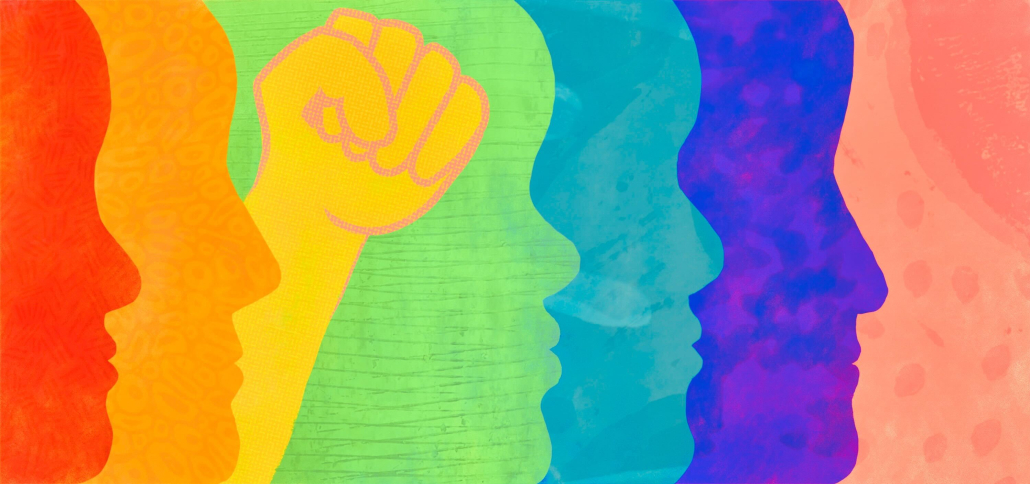USC isn’t as LGBTQ+-friendly as it wants to seem

It’s a familiar story for queer students at USC: escaping the hetero-monotony of our homes. We moved to USC with a vision of freedom of expression and close proximity to the queer culture to which Los Angeles is home. We were sold inclusive promises by highly effective propaganda geared towards newly admitted students, and given a chance to move to a diverse, prestigious university, we bought it. But is the University living up to its own messaging?
In my first semester at USC, I resolved to attend LGBTQIA+ events and make more queer friends, and, in large part, I was happy to find plenty of programming through resources like the LGBTQ+ Student Center and QuASA, the Queer and Ally Student Assembly. Yet, after my first semester at USC, I caught myself thinking: Is this it? It’s not that there weren’t events to attend — but rather than feeling more integrated into the community, I found myself showing up with the other queer friends I already knew, doing the activities in our own group, and leaving without much more than casual conversation with other attendees.
I’m not isolated in feeling this way; I frequently hear from peers that organizations such as these feel like impossible niches to break into. If you aren’t part of the institutionalized, formal queer community from the very beginning, you might not get very far, even if you are technically allowed to show up. Worse, LGBTQIA+ spaces at USC tend to be oversaturated with socioeconomically privileged queer students. This not only leaves out queer students with other marginalized identities but deprives them of the resources they would benefit from the most.
I looked to the Campus Pride Index for some clues as to how we got here (ironically, I remember perusing this site when choosing where to attend college). According to the site, the index “is an overall indicator of institutional commitment to LGBTQIA+-inclusive policy, program, and practice.”
While USC scored a four out of five, the index noted that it failed to “actively recruit faculty for LGBTQIA+-related academic scholarship,” provide training on gender identity and sexual orientation to new faculty members, or have a standing advisory committee that deals with LGBTQIA+ issues. For comparison, UCLA scored a four and a half, and fulfilled each of those mentioned categories. Indeed, despite both universities being situated in one of the most historically LGBTQIA+-populous and culturally rich regions in the nation, it’s only UCLA that has an academic institute dedicated solely to researching public policy on gender identity and sexual orientation issues. Meanwhile, despite USC being home to the ONE Archives — the largest collection of LGBTQIA+ materials in the world — it appears to make insufficient effort to publicize it or make it accessible.
Beyond academic life, USC scores deceptively high on measures of institutional support, such as having a “resource center/office with responsibilities for LGBTQ students” (ostensibly the LGBTQ+ Student Center). Though the center is an invaluable resource, little physical space at USC is actually committed to queer students. The LGBTQ+ Student Center, a beautiful space dedicated to providing resources and gathering community, is not only disappointingly small but is also inconveniently stowed away on the fourth floor of the Student Union. As a new student unfamiliar with the building, it would be easy to miss the center’s location, and like many of the other cultural centers, LGBTQ+ Student Center’s capacity to host programming is limited by its size.
In a more pressing manifestation of under-dedicating space to LGBTQ+ students, the University Park campus still has only two buildings with gender-neutral, multi-stall bathrooms — the same number previously reported by the Daily Trojan in 2016. Additionally, only 67 of the 274 buildings have any gender-neutral bathrooms, single or multi-stall. How is it that despite years of student advocacy and promises from the school, this vital component of LGBTQIA+ inclusivity has made almost no progress?
The University strives to be a leader among higher education institutions in equity and inclusion, and students like myself flock to Los Angeles to benefit from USC’s academic and social riches. As young queer adults who have made it thus far, we can, and should, always demand more. The reality both students and the administration must face is that it’s not enough to have pride flags plastered around the campus during LGBTQIA+ history month. Until true institutional academic support and useful physical space are dedicated to us, and until we as students collectively know to demand it, LGBTQIA+ students will always struggle to have a presence in this campus community. Without presence, we can’t even begin to tackle the issues of inclusion within the LGBTQIA+ community itself.

